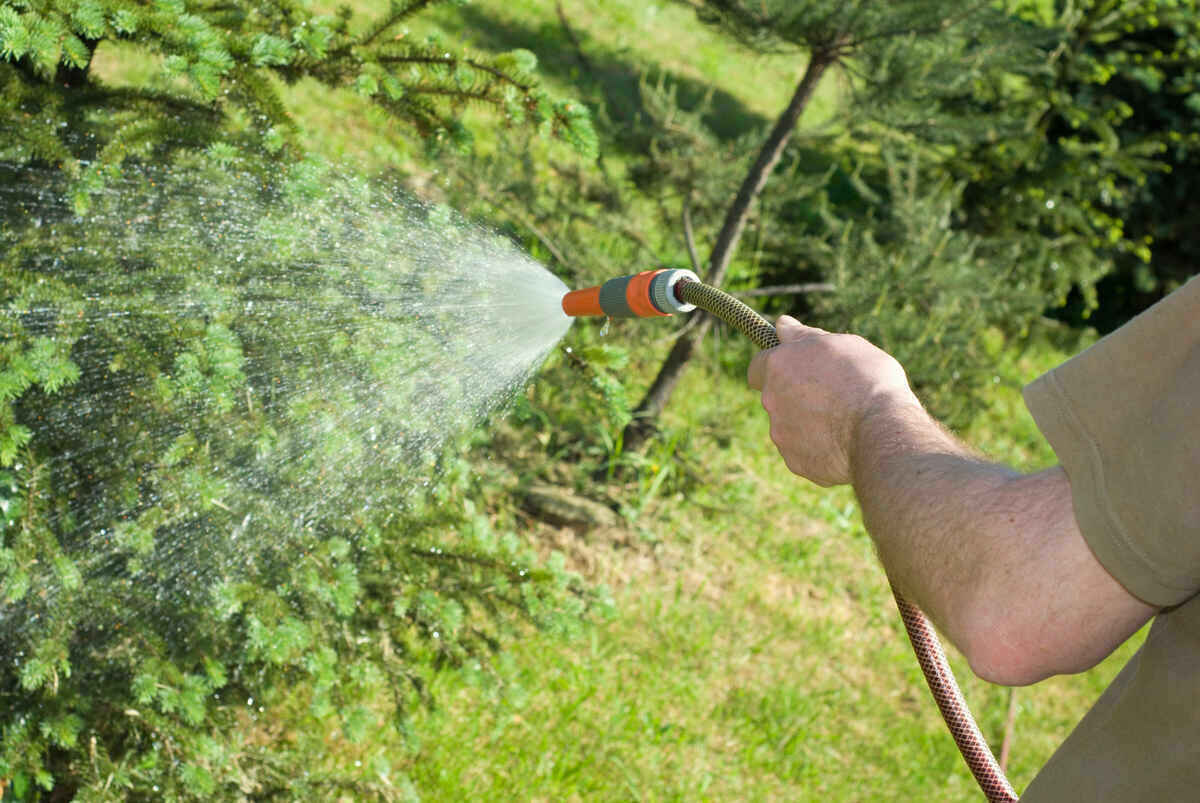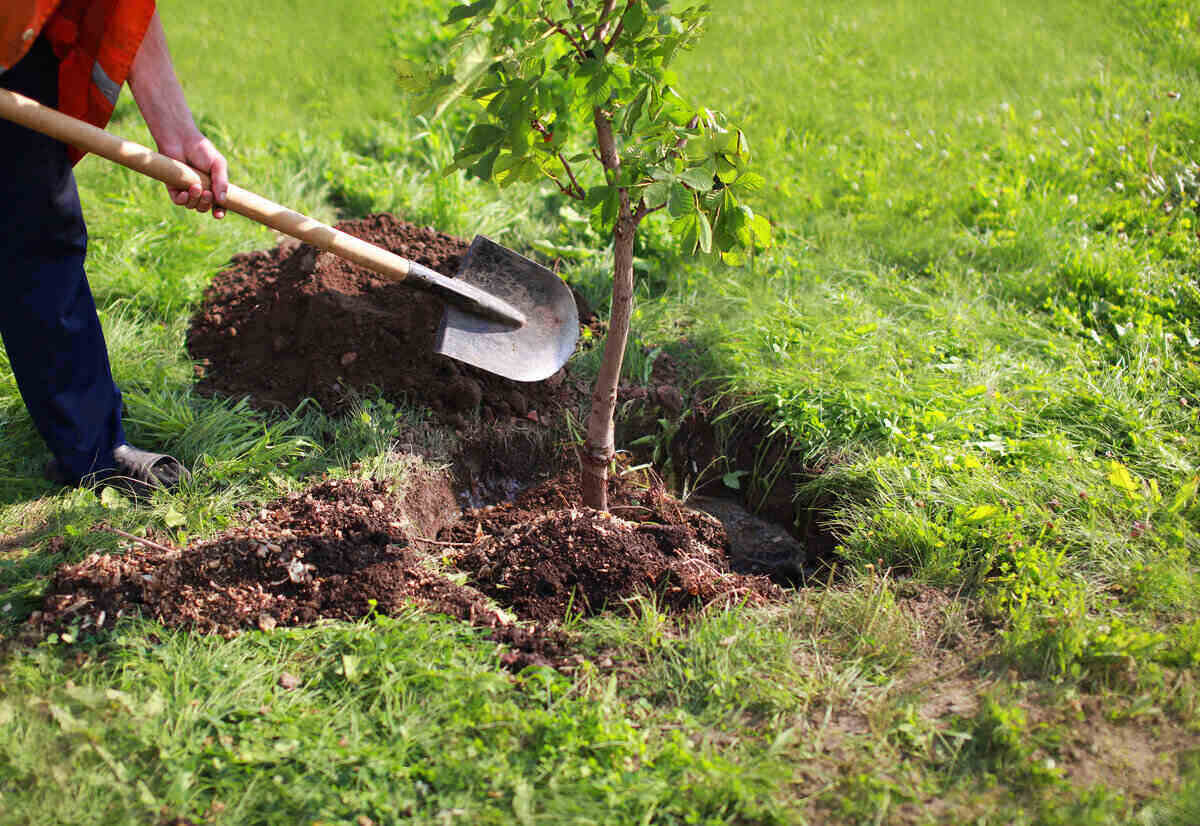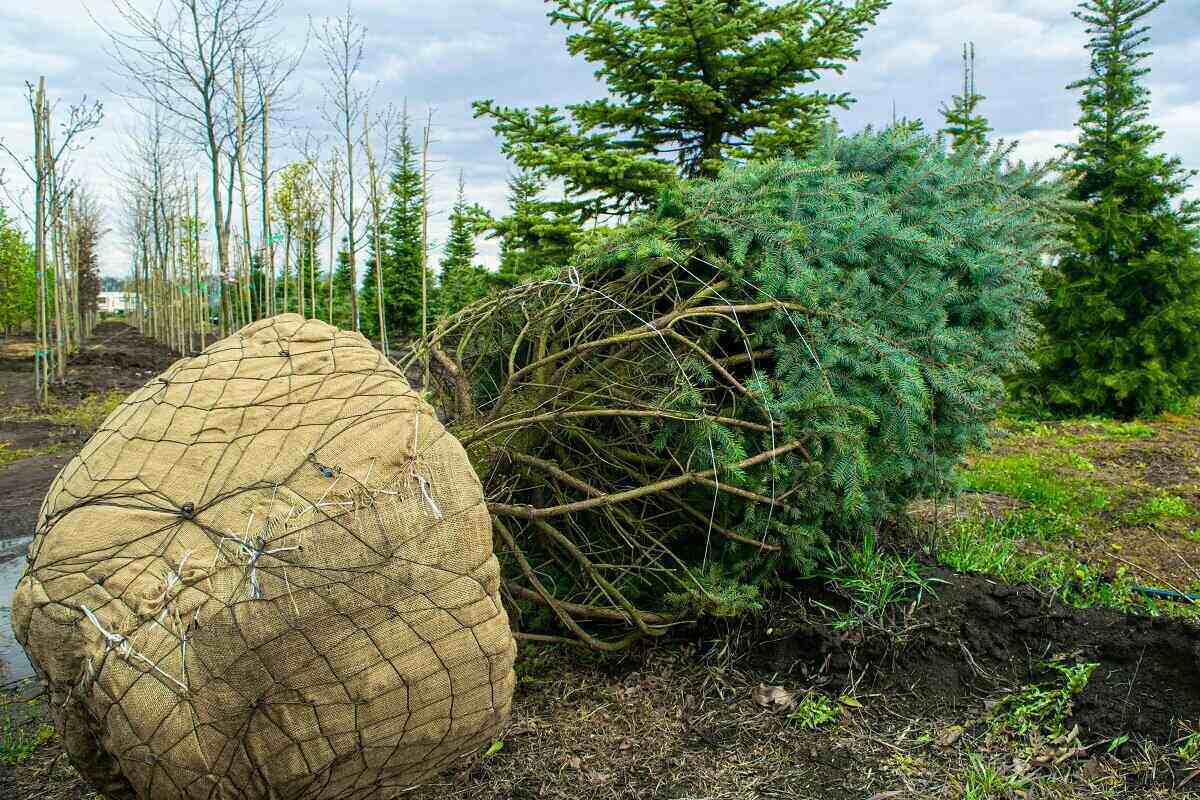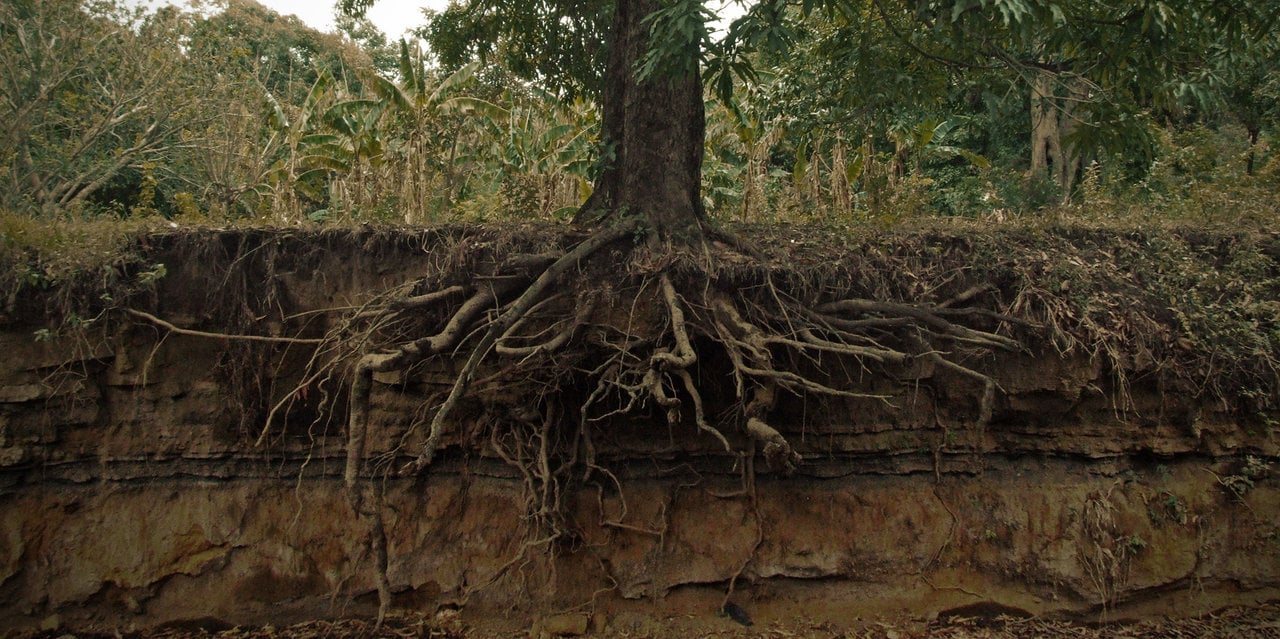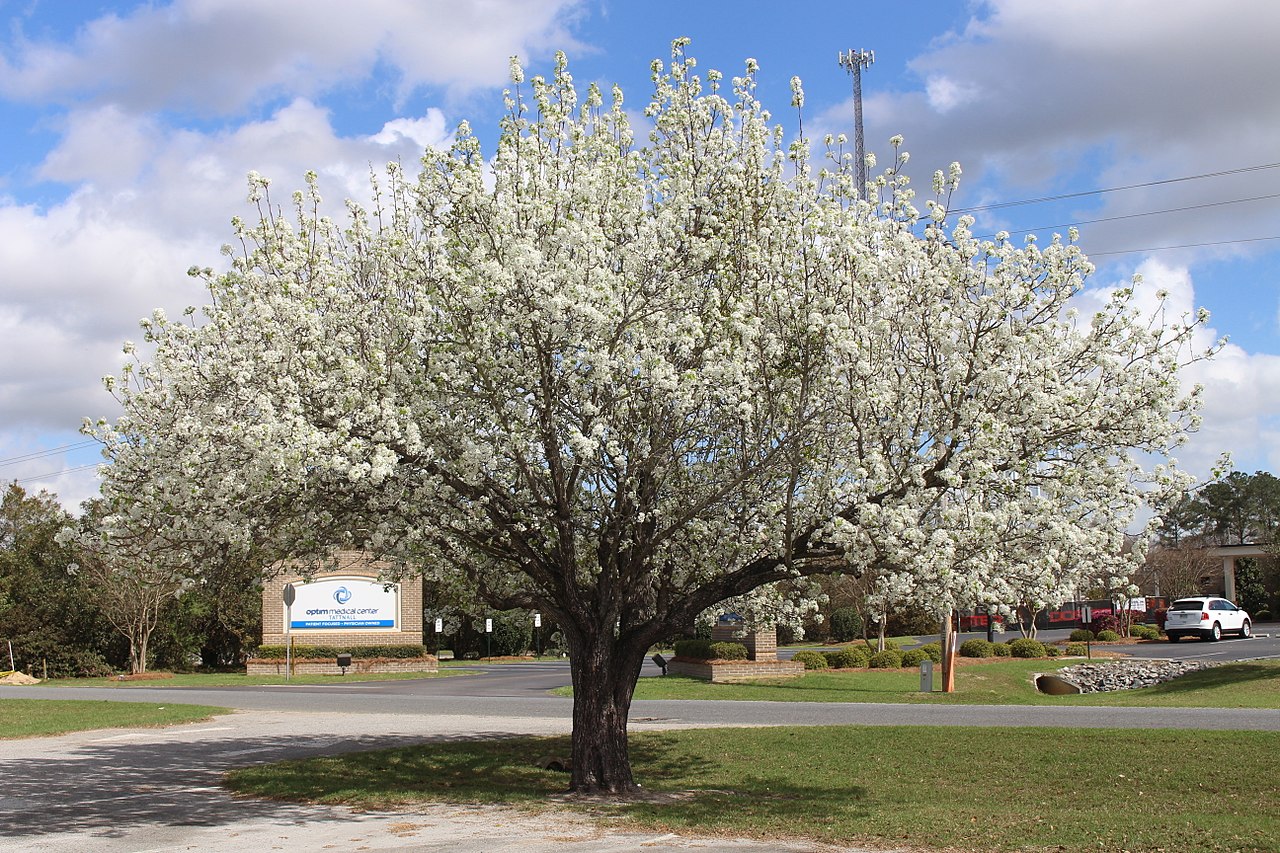
The city of Dallas has a shady plan: It wants residents to plant trees. The Urban Forestry Management Plan aims to cool the city down by encouraging more trees. It’s a great way to mitigate the urban heat island effect that drives those triple-digit temperatures even higher in the summer. But before you grab the shovel and mulch, do some research on tree care in East Texas. Some trees are too messy, or dangerous, or invasive to put in your yard. Here are the five worst trees to plant in Dallas — or anywhere else in the Metroplex.
1. Bradford Pears
Don’t let the beautiful white blossoms of the Bradford pear tree in the spring sucker you into thinking it’s OK. Even though it was planted with enthusiasm in the ’60s, the Bradford pear (pictured above) has grown to become one of the most hated trees in the southern U.S. Fast forward a few decades after planting. Owners discovered they smell awful and the tree’s main trunk is prone to splitting. During windstorms, their branches break away and turn into projectiles. That puts you, your family, and your property at risk.
2. Cottonwood
Cottonwoods mean one thing for sure — a mess. That white fluff, or “cotton,” are the seeds produced by the female cottonwood tree. The fluff can get so thick, it looks like the lawn is covered in snow. The male cottonwood is no saint, either. Many people suffer from allergies to cottonwood pollen, which, unlike the fluff, is largely invisible and sneaks up on you. If you’re looking for low maintenance, or just neat and clean, yard, the cottonwood is not for you.
3. Ash Trees
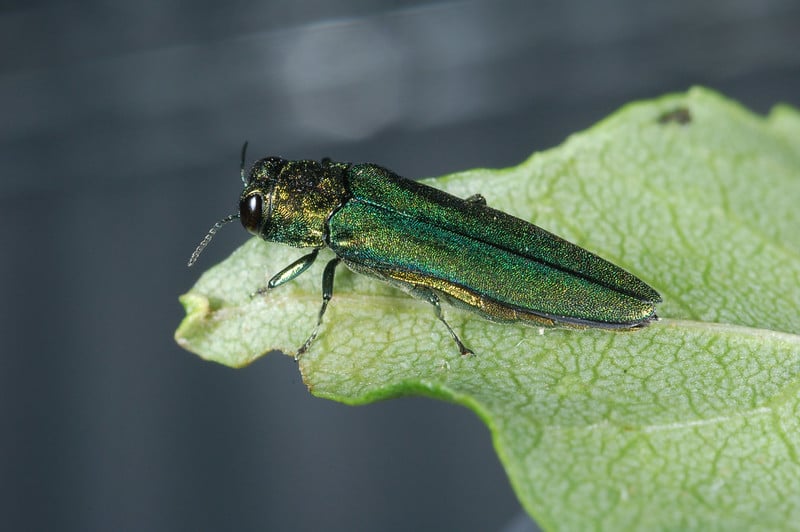
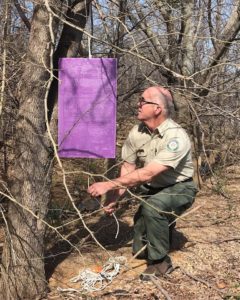
The Texas ash tree is a native species. But the emerald ash borer has moved into Tarrant County. The pest that has decimated forests of ash trees in states north of Texas, and attacks all 16 species of ash trees native to the United States. In fact, Tarrant County is one of four Texas counties under an ash tree quarantine.
“There is no known stop to this epidemic,” said Texas A&M Forest Service Urban Forester Courtney Blevins. “But we can help communities minimize loss, diversify their tree species and contribute to the health and resiliency of their urban forests.”
If you have ash trees already, keep an eye on them, and if they show signs of infestation, prepare to have them removed. And to help stop the spread across county lines, don’t plant any new ash trees.
4. Pecan Trees
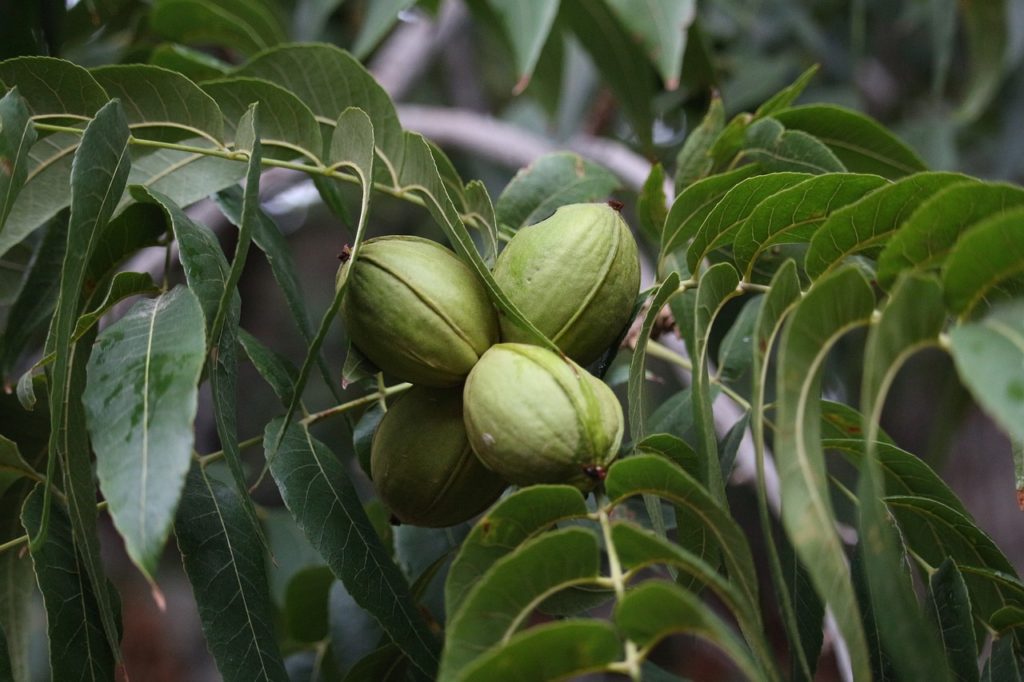
You may love a good pecan pie, but you might pay the price with your allergies. The culprit here is the male pecan tree. It “releases highly allergenic pollen grains, which are correlated to the incidence of hay fever in the exposed population,” according to a study from the National Institutes of Health.
The state tree has both male and female equipment and undergoes a sort of temporary sex-change called dichogamy so it doesn’t pollinate itself. The end result isn’t as racy as it sounds. If you have pecan trees on your property, pollen will be a problem at some point. The mature nuts (which are actually considered to be a fruit) will also make a mess in your yard if you don’t harvest them. So if you’re not an allergy-free pie lover, think hard about this one.
5. White Mulberry
The white mulberry is an invasive species that displaces natives, and can also give the native red mulberry a root disease. Talk about an unwelcome visitor! If that isn’t enough to dissuade you from planting the white mulberry, then think about this: purple bird poop splattered on your driveway, walkway, and the exterior of your home. Bet that got your attention. The white mulberry procreates with the help of birds that eat its ripened reddish-purple fruit and then poop the seeds somewhere. Already have a white mulberry on your property? Forestry specialists recommend you pull the seedlings, cut down the trees, and grind the stumps. The white mulberry gets no love in Texas.
Yes, Plant Trees (Just Not These)
Don’t let this list throw you off — the city of Dallas definitely wants you to plant trees as part of its urban forestation plan. By avoiding the five worst trees to plant in Dallas, and practicing good, basic tree care, you’ll also help clean the air, keep the city cool during those long hot summers, and provide food and shelter to the animals that are a part of the urban ecosystem. This list should help you weed out the species more trouble than they’re worth.
